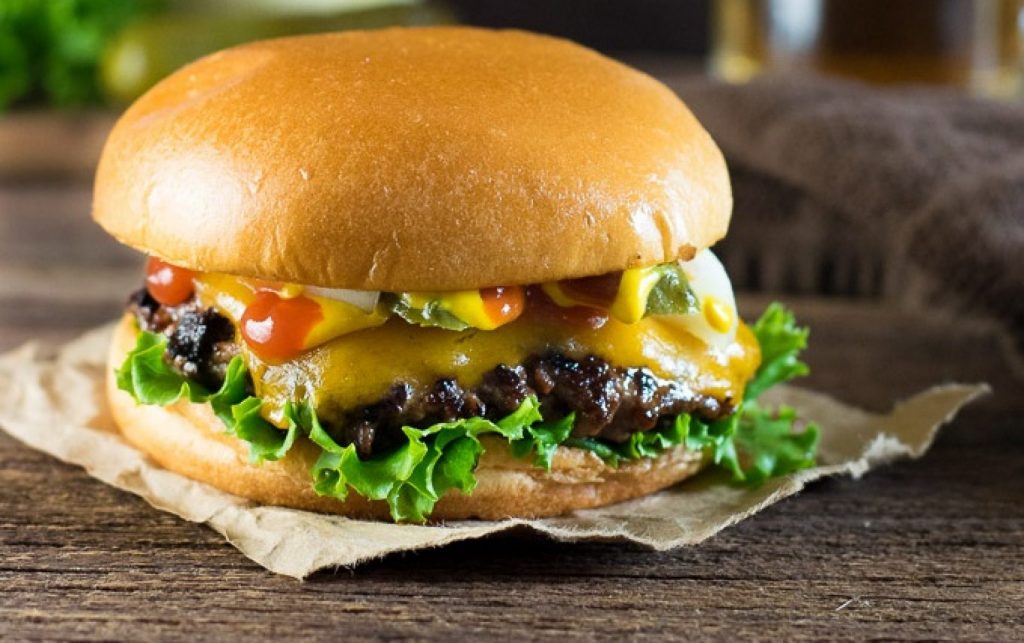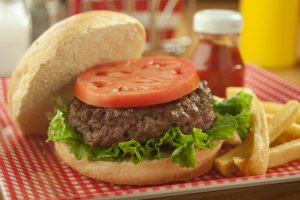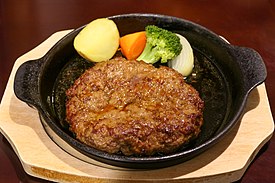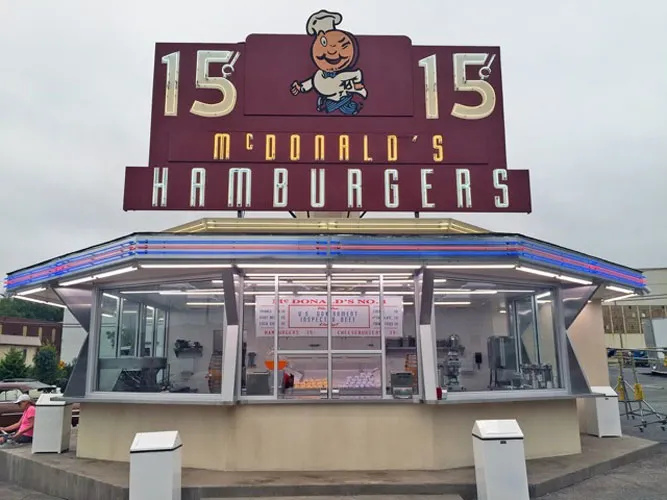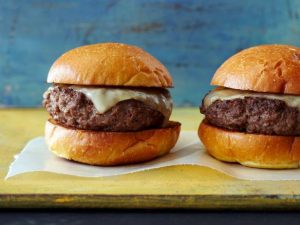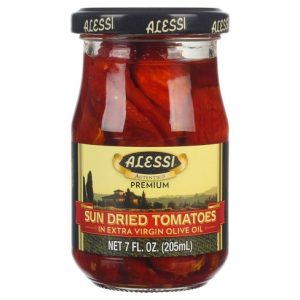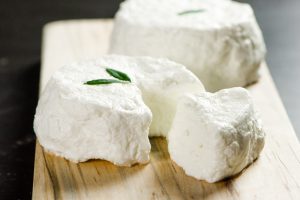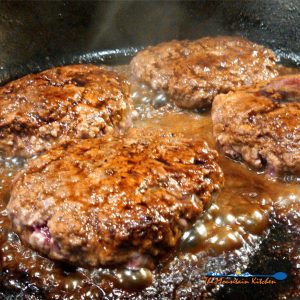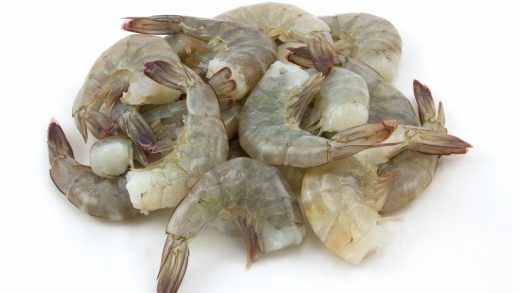Everyone has their own favorite kind of burger. The traditional hamburger has grown into a symbol of American culture. But is it really? Either way, the best burger is the one you make your own. Some like plain beef with a little salt and pepper, nothing else. Some say it’s all about the quality of the beef, or whatever meat you’re using. You can now make burgers from fish, pork, bison, or chicken. You can even have a non-meat burger, which makes absolutely no sense to me.
I have several different burger recipes. The simplest is to open the package of fresh ground beef, take a hunk of meat into your fist and form it into a patty. Others like to use molds to get the perfect patty. Some make hamburgers like meatloaf. I say whatever way you like it should be your favorite.
Where Did It Come From?
The hamburger is mostly linked to the industrial era United States during the late 19th century and early 20th century. What made this sandwich a winner was that it was perfect for a modern population on the go. It’s quick to cook, can be eaten with one hand, and can give you a full day’s supply of fat, sugar, and salt.
The U.S. has a good claim on creating this combination of bread and meat. But then there’s that name “hamburger.” This isn’t made with ham. So, why? It’s because there is a competing claim for the origin of the hamburger from the rising working class in the German industrial city of Hamburg. Ultimately, the United States was able to hold on to the claim and make it an icon of this country around the world.
From Tartare To The Big Mac
The first recipe for something like a hamburger can be found in an ancient Roman cookbook. Called Isicia omentata, chopped beef was mixed with pine kernels, peppercorns, and wine and pressed into a patty that was then grilled or baked.
The next version of the dish came from France in the form of tartare. It is in the writings of the famous Science Fiction author Jules Verne that we first learn about this dish tartare, a blend of raw minced beef and spices. Something similar in German cuisine shows up called Hamburg Sausage, minced meat mixed with spices and served with toast.
From there we got meatloaf, meatballs, Kafka, and other dishes around the world using ground or finely chopped meat. Currently in Japan, beef tartare is a very popular dish. During the Industrial Era, the German port city of Hamburg was a major trader with the new world, especially New York City. Restaurants serving “Hamburg-style” foods began popping up near the docks. By the mid-19th Century, there were ethnic restaurants all around New York and other coastal cities. The Hamburg Steak began showing up on restaurant menus across the country. Salsbury Steak is a dish that covers the Hamburg Steak with beef gravy.
During the industrialization of the world, particularly in the United States, Hamburg Steak became more popular because it was quick and increasingly affordable in a way that wasn’t possible in Europe. By 1930, Hamburg steak became hamburgers and then just burgers.
But Who Added The Bun?
This, of course, refers to the invention of the sandwich. This is credited to the mid-18th Century Earl of Sandwich, John Montagu. According to legend, the hamburger as we know it today was invented by a cook in Texas who put a Hamburg Steak between two slices of bread.
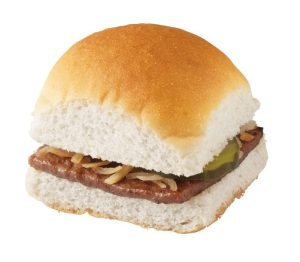
But another story credits the invention to the founder of the White Castle burger chain which introduced the Hamburger Sandwich. Either way, it’s clear it was invented around the end of the 19th century into the early 20th century. Certainly, the so-called White Castle System is unique in the burger business and it has been that way since it began in 1916 in Witchita, Kansas. In fact, White Castle is responsible for the fame of America’s favorite sandwich. It was the very first fast-food restaurant chain. Founder Walter Anderson invented many elements we take for granted today when we think about a hamburger. He made the beef patties a little smaller so they would cook faster and designed the special square buns that Castle uses. He even designed a spatula for flipping the burgers on the steamed grill.
Enter The McDonald Brothers
In 1937, near a Southern California airport on the old U.S. Route 66, Patrick McDonald, with his two sons, Richard and Maurice, opened the original McDonald’s Restaurant. The more educated sons brought a real business sense to the restaurant and discovered that most of their money was made from selling hamburgers. So, they reworked the menu. Next, they changed the way the burgers were made to speed up the process. It also became the first drive-thru restaurant. By selling franchises, McDonald’s was able to open new restaurants in other cities around the country. One of those franchisees was Ray Kroc, who later bought and took over the company, making it a national icon and part of American culture.
And The Cheese?

The cheeseburger came along later as restaurant chains across the country were trying to duplicate the success of White Castle and McDonald’s. Big Boy was the next biggest competitor in the burger business and was the first to introduce the double-sliced bun for the first double-decker burger with a slice of bun between two beef patties.
By the middle of the 20th century, American-style hamburgers were spreading around the world. There are so many different ways you can do them, so feel free to experiment. In fact, I have a good recipe you should try right here.
The Savory Burger
In this recipe, we’re talking about a burger so full of flavor that it needs nothing else. No bun, No ketchup. No pickle. But you do you and eat it the way you want. These burgers come ready to go without any additional spices, condiments, or cheese. The key is using very lean ground beef with less than 20% fat. That makes them more healthy than lots of other burger recipes, replacing the fat with other flavors.
These are great as sliders and go well with lightly toasted sourdough bread. Make these amazing burgers and make them into your own secret recipe.
Prepare Your Burgers
Believe it or not, allowing your ingredients to reach room temperature before cooking can actually make the cooking faster, easier, and better tasting. Obviously, this isn’t always the case. But for the most part, if you have the time, you should take it.
While you are mixing your burger meat, put your biggest skillet (I hope it’s cast iron) over the heat to warm up. It doesn’t have to be high heat, low will do until your burgers are ready for the pan. If the pan is not well-seasoned, put a tablespoon of oil in the pan while it’s heating.
You need two mixing bowls, one for the wet ingredients and one for the dry ones. Start with about a pound-and-a-half of lean ground beef. Personally, I think an 80/20 blend works best for most uses. That means it’s 80% lean, and 20% fat. You can go leaner, but the leaner meat tends to have less flavor and often is too dry to hold together. Regular ground beef, the cheapest, is usually only 70 to 75% lean, giving you a lot of grease in your pan that does nothing for the flavor.
In whichever bowl you designate to be for the wet ingredients, crumble the ground beef into it. Add to that one egg. Be sure not to get any shell pieces in the meat.
Some of the next ingredients you might have to buy ahead of time as they are not as likely to be in your pantry. To the meat, you need to add 1/3 of a cup of sun-dried tomatoes. You can find these near the salad dressings, usually. These come packed in various ways, go for the oil-packed ones. These will need to be drained and then well-chopped. You probably won’t need the whole jar, but as long as you keep the oil in it, it should last for several weeks awaiting further uses.
Another ingredient you will probably need to buy is goat cheese or chèvre. If you haven’t tried it, I strongly suggest you do. It’s really good. Goats are one of the first animals humans domesticated for food. Goat’s milk cheese is found around the world and can range from hard, like Pecorino, or soft like cream cheese. I suggest you look for goat cheese that will crumble well. In fact, you can buy it already crumbled. Goats’ cheese melts well and can be used anywhere you might use ricotta. You need about 4 ounces.
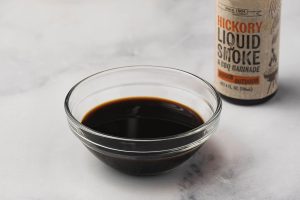
Some cooks are familiar with liquid smoke, but many are not or think it’s some sort of “cheat.” The better versions really are made from distilled smoke, and the cheaper ones are made from chemicals. If you don’t have this in your spice cabinet, you should consider adding it. Besides this dish, you can use this to make a great barbecue sauce, or anywhere a little smokey taste would be good.
The rest of the ingredients are seasonings you probably already have. So, add your 1/3 cup of chopped sun-dried tomatoes and the crumbled goat cheese to your wet bowl with the meat. Add one teaspoon each of salt, thyme, oregano, parsley flakes, and freshly ground black pepper. Also add a tablespoon of steak sauce, like A-1, and two tablespoons of liquid smoke. That seems like a lot, and you can cut back on that if you don’t like that flavor. Making sure your hands are clean, use them to thoroughly mix the hamburger mixture until all the ingredients are well and evenly combined. Divide the mixture into six equal sections and roll them into balls. Press them into patties, separated by wax paper.
You may have noticed by now that these burgers are very delicate, so you’ll have to handle them very carefully.
Light ‘Em Up
Heat a skillet or griddle or grill pan over high heat. If your pan is not well-seasoned or non-stick, hit it with a little cooking spray. Once the pan is hot, carefully add your burgers to the hot pan. Do NOT crowd them. It’s much better to cook them in batches if necessary. This will allow the burgers to brown better by letting more moisture escape. Crowding the pan causes the burgers to steam, which is not what you want here.
Don’t touch them for five minutes. Just let them cook and do their thing. If you like a smoky taste, add a couple drops of liquid smoke on the raw side of the patties. Gently flip the burgers and cook for another five minutes. When an instant-read thermometer hits 160℉, these are done. Do not overcook them as they will lose some of the juicy goodness.
When they are ready, gently move them to drain on paper towels, or straight onto a slider or brioche bun. Taste them before adding condiments.
These make fantastic sliders, but they also fit a regular-size burger bun. I like to cut a large russet potato into French fries and put them in lots of oil over high heat. I use a set of tongs to turn them as needed. A big puddle of ketchup on the plate serves for dipping both the fries and the burger.
These are as good as any you will find in a restaurant because they are highly spiced. You can adjust the seasonings to your own personal taste. But don’t be afraid to try something new.
